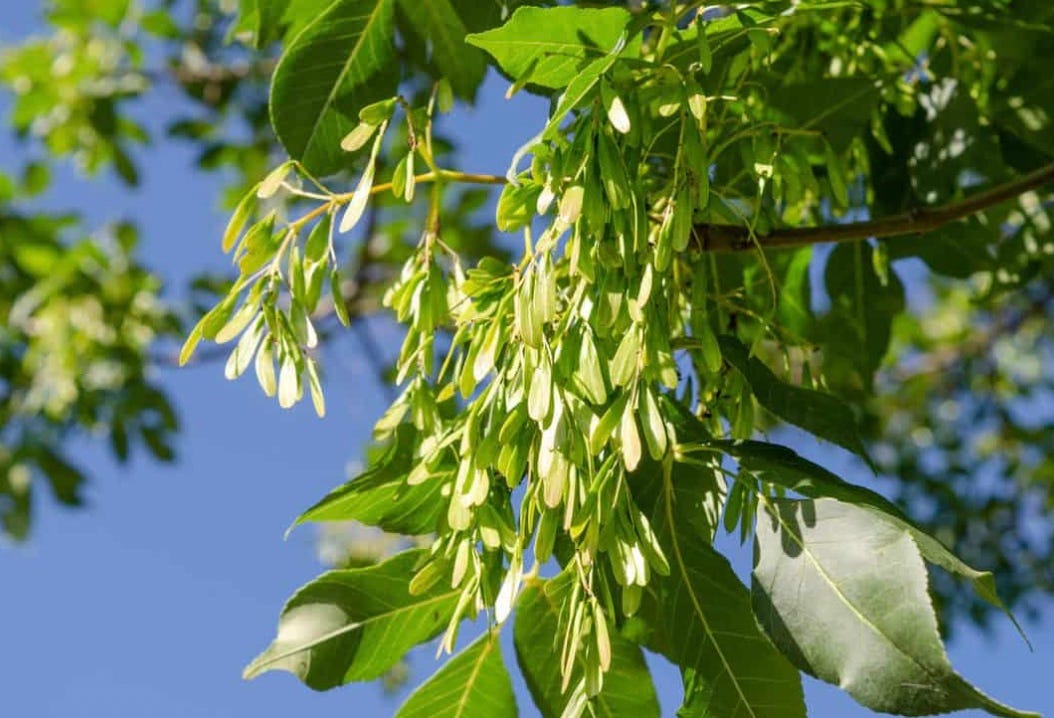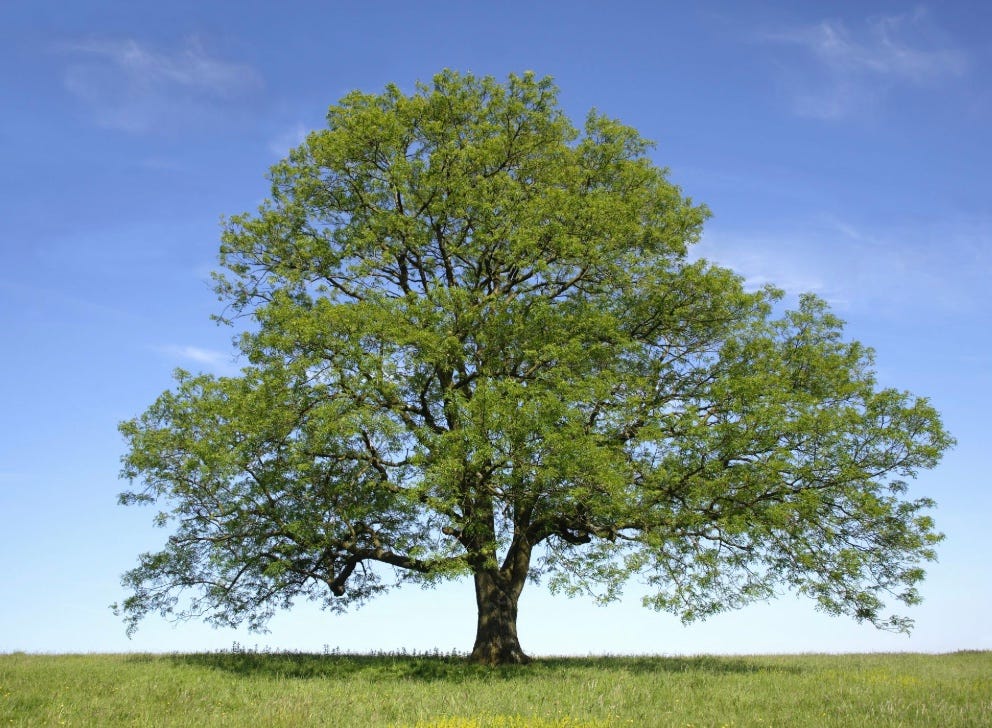First Encounters
I remember the first time I learned about the perilous future of our Ash trees. I was on a tree walk with a local expert, one Ted Cook, near the flooded lands of the Gearagh, Co Cork. We walked slowly, wonderfully slow, because any two steps of progress contained enough subject matter for Ted to talk on at length - Ted Talks, people enjoyed to call him. We were walking on a quiet path between water, when he stopped and pointed out a tall, elegant tree with delicate, compound leaves. ‘That’s an Ash,’ he said, ‘but they’re in trouble.’
I looked up at the tree, its limbs stretching skyward with a quiet confidence, its leaves catching the sunlight in delicate patterns. How could it be in trouble? I wondered. It looked in the prime of its life. I had always thought of Ash as a symbol of strength, a tree that had endured for centuries. The purported World Tree of Norse mythology, Yggdrasil, was often believed to be an Ash—its roots anchoring the underworld, its branches cradling the heavens.
‘Ash dieback is sweeping through Ireland,’ Ted continued, his voice tinged with sadness. ‘A fungus from abroad—it blocks the tree’s vascular system, starving it of nutrients. Most of the young ones won’t make it, and the old giants are failing, one by one.’
I felt a pang of sorrow, standing beneath the towering branches. This tree, so rooted in our culture, in our landscapes, and in our stories, was struggling. The thought of Ireland without its Ash trees seemed unthinkable. It seemed so unthinkably unfair that a tree, these lungs of the world, would be attacked in their very own vascular systems.
‘So what can be done?’ I asked, though I already sensed the answer wasn’t hopeful.
Ted sighed. ‘Not much, I’m afraid. We’ll see fewer and fewer of them in the years to come. Some might have resistance, but it’s a long road ahead. We can only wait and see. There are many people just as concerned as you.’
Ted and the group moved on, but I lingered for a moment, and placed my outstretched hand on the bark, wondering if this particular Ash would survive or if it, too, would fade like so many others. It was hard to take in, as I looked up into its full display of leaves, that this tree also was being killed by an unseen force.
Ash wood in my hands
How and where have I encountered this tree? When I’ve partaken in green woodworking workshops, ash was always present. Old gate and fence posts, ‘hurdles’ as they call them, were made with ash. It was the wood of choice for traditional craftsmen, not only for its strength but for its workability. Even closer again, I learned that the wheels of yurts were made with steam-bent ash, a testament to its unique properties.
Steam bending is an ancient technique that allows wood to be shaped into elegant curves without breaking, and ash, with its long, straight grain and remarkable elasticity, is one of the finest woods for this process. In workshops, I watched as lengths of ash were placed in steaming chambers, the heat softening the lignin in the wood. Once pliable, it was carefully bent around metal jigs and left to cool, setting into strong, graceful shapes. I remember the scent of the steaming wood, the almost meditative rhythm of the work, and the sense of connection to generations of craftspeople who had shaped ash into everything from tool handles to intricate furniture.
The resilience of ash, its ability to bend without breaking, is not just a physical trait—it feels like a metaphor for its place in the world. But now, with the relentless spread of Ash dieback, I wonder if this quality will be enough to see it through.
Ash Ecology
We began this series with two trees that are pioneers in their own right, the birch and the rowan. With the ash we move into the territory of the great trees of Ireland, the ones that dominate our landscapes. The Ash does not seek out the heights like the Rowan, nor does it rush to colonize barren land like the Birch. Instead, it stands tall in the heart of the landscape—along riverbanks, in hedgerows, and in woodlands where the soil is deep and rich. It is a tree of patience, growing slowly, yet reaching impressive heights, its limbs extending skyward in graceful arcs.
We are nearing March now, but the ash will not be opening its budding leaves any time soon. Observe it. It is one of the last trees to wake from winter. It waits until the risk of frost has passed, which in Ireland can be as late as early May, before unfurling its delicate, feather-like leaves. This caution belies its toughness. Once in full growth, Ash is vigorous, capable of recovering from harsh winds and pruning itself in response to storms. It is a tree that endures.
A Tree of Utility and Strength
The wood of the Ash is one of the most valued in Ireland. It is flexible yet strong, lightweight but durable. For centuries, it has been the chosen wood for tool handles, and most notably for hurleys, the sticks used in the ancient Irish sport hurling. The old saying goes, ‘Oak is strong, but Ash is tough’, and it is this toughness that has made it essential to farmers, warriors, and craftspeople alike.
And I have encountered ash when I went to buy firewood for the coming Winter - when I spent winters in Ireland that is. Unlike other hardwoods, Ash burns green! making it a prized firewood. In times past, when winters were long and stores were low, a fresh-cut Ash log in the hearth could provide warmth without the need for seasoning. This practical usefulness only adds to its reputation as a tree of the people.
A Tree of Myth and Magic
The Ash has long been revered in Irish folklore. It is one of the five sacred trees of ancient Ireland, deeply entwined with the stories of heroes and gods. Yggdrasil, the great World Tree of Norse mythology, is often believed to be an Ash, its roots running deep into the underworld and its branches holding up the heavens.
In Irish tradition, Ash trees were planted near sacred wells, their roots thought to purify the waters. It was said that cutting down an Ash near a holy site would bring misfortune, and those who carried an Ash staff were believed to walk with protection against evil. In some parts of Ireland, people would tie ribbons or small offerings to the branches of Ash trees, seeking blessings or healing from their sacred presence.
One of the most enduring beliefs about the Ash is its connection to healing. Ash leaves were placed in cradles to protect infants from harm, and in some rural areas, it was believed that passing a sick child through the split trunk of an Ash could cure ailments. The sap of the Ash was sometimes used in folk medicine, believed to hold protective and restorative properties. These traditions speak to the deep trust our ancestors placed in this tree, seeing it not just as wood and leaves, but as a guardian of health and harmony. Even today, the sight of a lone Ash tree standing in a field, untouched, speaks to the quiet reverence people still hold for it.
The Uncertain Future of the Ash
Yet here we are today, the Ash faces one of its greatest challenges. The spread of Ash dieback threatens the future of this beloved tree. Many once-proud specimens are now withering, their canopies thinning, their strength fading. It is a stark reminder that even the most steadfast of trees is not invincible.
Across Ireland, conservationists, scientists, and foresters are working to find ways to slow the spread of the disease and identify resistant strains. Some trees, against all odds, are showing signs of resilience—perhaps they hold the key to Ash’s survival in the future. Meanwhile, seed banks and replanting initiatives seek to safeguard its genetic legacy, ensuring that even if the old giants fall, new Ash trees may one day rise to take their place.
Yet, if any tree embodies endurance, it is the Ash. For centuries, it has withstood storms, axe, and fire, always returning, always growing. Perhaps, like the stories it carries, it will find a way to persist—through resilience, through adaptation, and through the deep-rooted connection it holds with the land and its people. Whether standing in an ancient woodland or forming the shaft of a hurley gripped in a child’s hands, the Ash is woven into Ireland’s story. And perhaps that story is not over yet.









Sorry to hear that Toni. So many have died. But there is some hope that they are building resistance, little by little.
Thanks so much for sharing my book. Really looking forward to having my second one out in the world :)
Hi David
My beloved Ash tree at the bottom of the garden has died . I've kept the skeleton and intend to grow honeysuckle or some climber to just keep it.I was very sad to see it die
I'm meeting my friend Anne Carey now in Liffey Valley and will present a gift to her..your wonderful book.
Till I see you again.. safe travels and rest.
Toni